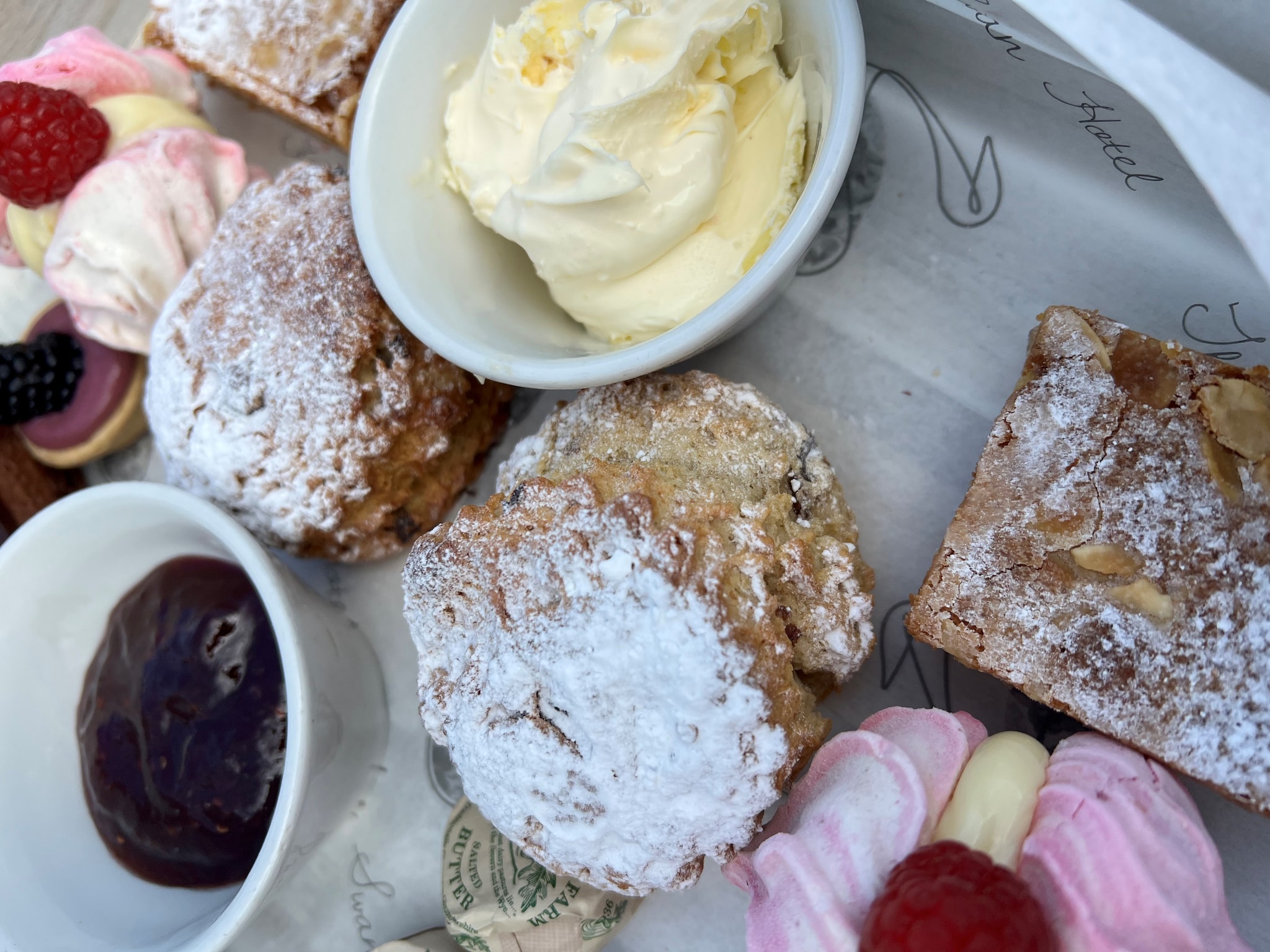Thank heavens! I haven’t acquired a fake British accent, but after spending hardly 15 days in England, I surely have accomplished some very amiable English habits. Especially, the habit of having high tea. I just love the idea, that right in the middle of the late afternoon, when everyone else is toiling at work, a few privileged beings can take time off to sit back, relax and indulge in a longish meal, with plenteous food and conversation.
But, for me, to fully explain high tea to you, I would first have to defog “afternoon tea” first. Most people think of high tea as a fancy meal, with tea and a variety of sweet and savoury snacks. In reality, it is the “afternoon tea” that is the posher meal. Also known as “low tea,” it is served around 4 pm and became fashionable in the early 18th century, thanks to Anna, the Duchess of Bedford. She created this meal as a social event to fill the long gap between lunching and dining at a time when dinner was served as late as 8 pm. This afternoon, tea was customarily taken at a low table, like a coffee table, in the sitting room, while seated in posh chairs by royals and aristocrats in a leisurely fashion; the table laden with eats, nosh and tea, and hence was also called “low tea”.
However, in the 18th century, when the Industrial Revolution took over the UK, most factory workers who were away from their homes during meal times needed a meal and break from work by 5 pm. A meal that included substantial food and tea. That’s when the time of tea shifted from the afternoon to early evening, becoming a sort of evening supper for the working class and social event of “high tea” for the aristocrats and Royals. A necessary meal for the proletariat, and an afternoon of amusement with a hearty spread, and luxurious tea, served at the dining table sitting on high-backed chairs, with guests for the patrician.
Now that I have tried to explain the terms, what does really go into a good High Tea, besides the tea itself? The menu is light and focuses on finger sandwiches, savoury tarts and pies, and small desserts, served with a selection of teas, like Earl Grey and Assam, as well as herbal teas like chamomile and mint. Today, High Tea is hardly ever had at home, but is quite popular as a tradition in fancy hotels all over England and Scotland. And on this holiday of mine, I grew quite accustomed to waking up after a gin induced afternoon siesta feeling quite ravenous, looking for a nibble or two.
If you are living in London, my favourite place for afternoon tea is Fortnum & Mason. A quintessentially British department store, which has stood at Piccadilly since 1707, which lays claim to inventing the Scotch Egg in 1738. Iconic, mostly because ‘The Queen’ shops there, Fortnum & Mason serves tea at the Salon on the top floor. Find yourself at a table at tea-time near a window on a crisp summer afternoon, while the sunshine streams in, you can savour a cup of fragrant Earl Grey, (I’d much prefer a masala chai) in delicate Eau de Nil Flowers Bone China, chinoiserie design cups and saucers. Along with tea, displayed on your own individual porcelain three-tier cake stand, arrives an array of finger sandwiches.
Meticulously cut Suffolk-cured ham sandwiches, smeared with English mustard, wafer thin cucumber sandwiches with minted pea cream cheese, freshly sliced pink salmon between even more thinly sliced bread. And modern day takes such as a minted pea scone with beetroot relish, mushroom and whiskey pâté and a smoked trout éclair. Of course, for the more traditional like me, freshly baked scones with clotted cream and jam.

If you want to spend a few more pounds, then find yourself a seat on the verandah or in the dining room at The Goring Hotel. Right next to Buckingham Palace, this 120-year-old family run hotel has been serving afternoon tea for over a century. Scones with Devonshire clotted cream and jam, lemon cakes and dainty Coronation chicken finger and Roast sirloin sandwiches, strawberry and raspberry Crown Diplomat tart plus a glass of Bollinger special cuvée champagne or Bollinger rosé champagne if you can afford to pay for it.
And my favourite breakfast restaurant in London which also does a fine tea, The Wolseley. An old car showroom on Piccadilly now converted into a high-ceilinged elegant restaurant, The Wolseley does an all-day menu of oysters, snails, eggs and other continental food, but goes full-on traditional for tea every afternoon. With a pot of The Wolseley’s Afternoon Blend Tea or a glass of champagne comes out an assortment of finger sandwiches, cakes, fruit scones with homemade jam and clotted cream, desserts like the delicate Millefeuille and Eclairs, Macarons and Battenberg, and the epitome of afternoon pastries, the canelé. A small French pastry flavored with rum and vanilla with a soft and tender custard centre and a dark, thick caramelised crust.
But I am now back in Mumbai. And I am pining for high tea this hot Sunday afternoon. I just checked in my kitchen, I am going to have to settle for ‘adrak ki chai’ and green pea ‘ghugras’.
Kunal Vijayakar is a food writer based in Mumbai. He tweets @kunalvijayakar and can be followed on Instagram @kunalvijayakar. His YouTube channel is called Khaane Mein Kya Hai. The views expressed in this article are those of the author and do not represent the stand of this publication.
























